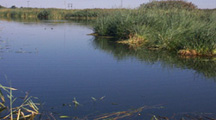Progress in Water Quality: An Evaluation of the National Investments in Municipal Wastewater Treatment
Comprehensive EPA report describes the progress made in cleaning up Americaís water.
January 3, 2002
|
This is the opening paragraph in the Executive Summary of the report sponsored by the United States Environmental Protection Agency (EPA) Office of Water, documenting the progress made in cleaning up the nationís water since passage of the 1972 Clean Water Act. The report emphasizes the role of the federally funded Construction Grants Program, which provided $61.1 billion in grants to local authorities from 1972 through 1995 to help finance improvements to the nationís wastewater treatment facilities. The complete report, including the Executive Summary, can be found at:
http://www.epa.gov/OW-OWN.html/wquality/index.htm
Prior to Clean Water Act and federal funding, many of the nationís waters were too polluted for fishing and swimming, or in severe cases, to sustain wildlife. Approximately 7 million tons of untreated wastewater was being dumped into Americaís water every day. The 1972 Clean Water Act established goals to eliminate the discharge of pollutants into the nationís waters and make its waters fishable and swimmable. The Cuyahoga River near Cleveland, Ohio was symbolic of the nationís environmental plight. In 1969, the river caught on fire, galvanizing the city of Cleveland and the nation into taking action to control water pollution. Today, after spending $300 million to clean up the pollution, Cleveland is a role model for other cities that want to clean up their water. The recreational and economic benefits have led to a renaissance for Cleveland.
In 1997, on the twenty-fifth anniversary of the Act, it was reported that more than 60 percent of the nationís waters supported fishing, swimming and other uses, with the goal of continued improvement into the future. Despite population growth, pollution levels in the nationís water were reduced 36 percent between 1972 - 1996.
Even though Salt Lake City did not receive federal aid in the original construction and subsequent upgrades of its Water Reclamation Plant, federal funding has made possible substantial improvements to water quality within Salt Lake County. Both the Central Valley and South Valley Reclamation Districts received federal funds to build new centralized treatment facilities eliminating a number of small and less efficient treatment plants serving other communities outside of Salt Lake City. Both of these treatment facilities discharge directly into the Jordan River, resulting in improved water quality of this countywide river. Salt Lake City rate payers have supported and financed improvements to the cityís Water Reclamation Plant, which have resulted in outstanding treatment performace and compliance in meeting federal and state NPDES permit limitations.
The EPA Report provides a comprehensive documentation of the results and benefits of the Clean Water Act and federal funding of wastewater treatment facilities in cleaning up Americaís water.
If you want more information on what Salt Lake City is doing to meet its environmental obligations under the Clean Water Act, please contact the following e-mail address: jon.adams@ci.slc.ut.us
Selected References:
Profiles in Water Quality: Clear Success, Continued Challenges, Water Environment Federation, 1998
